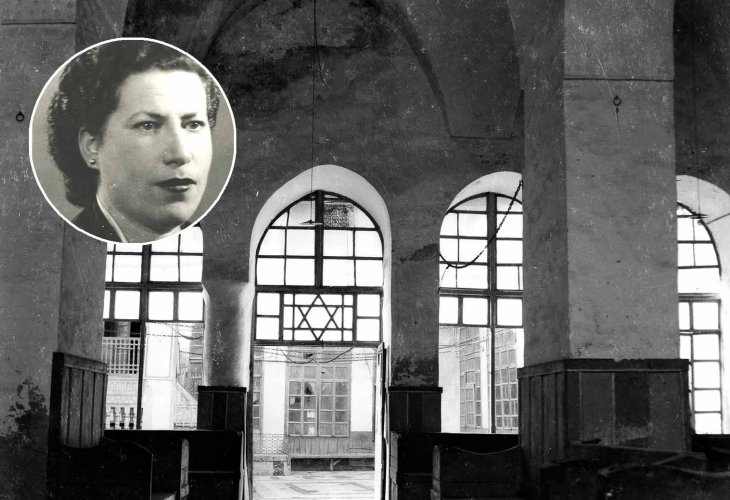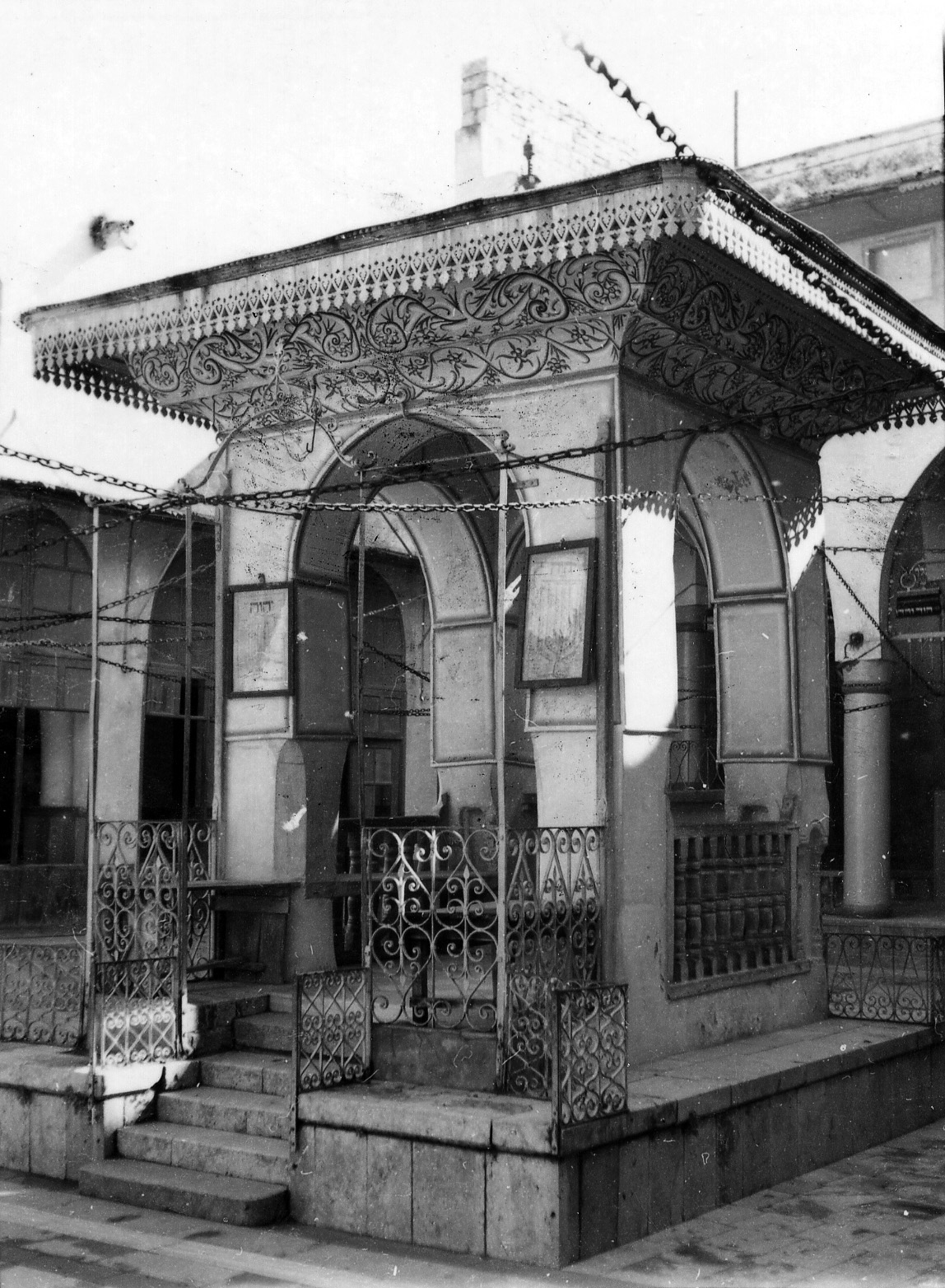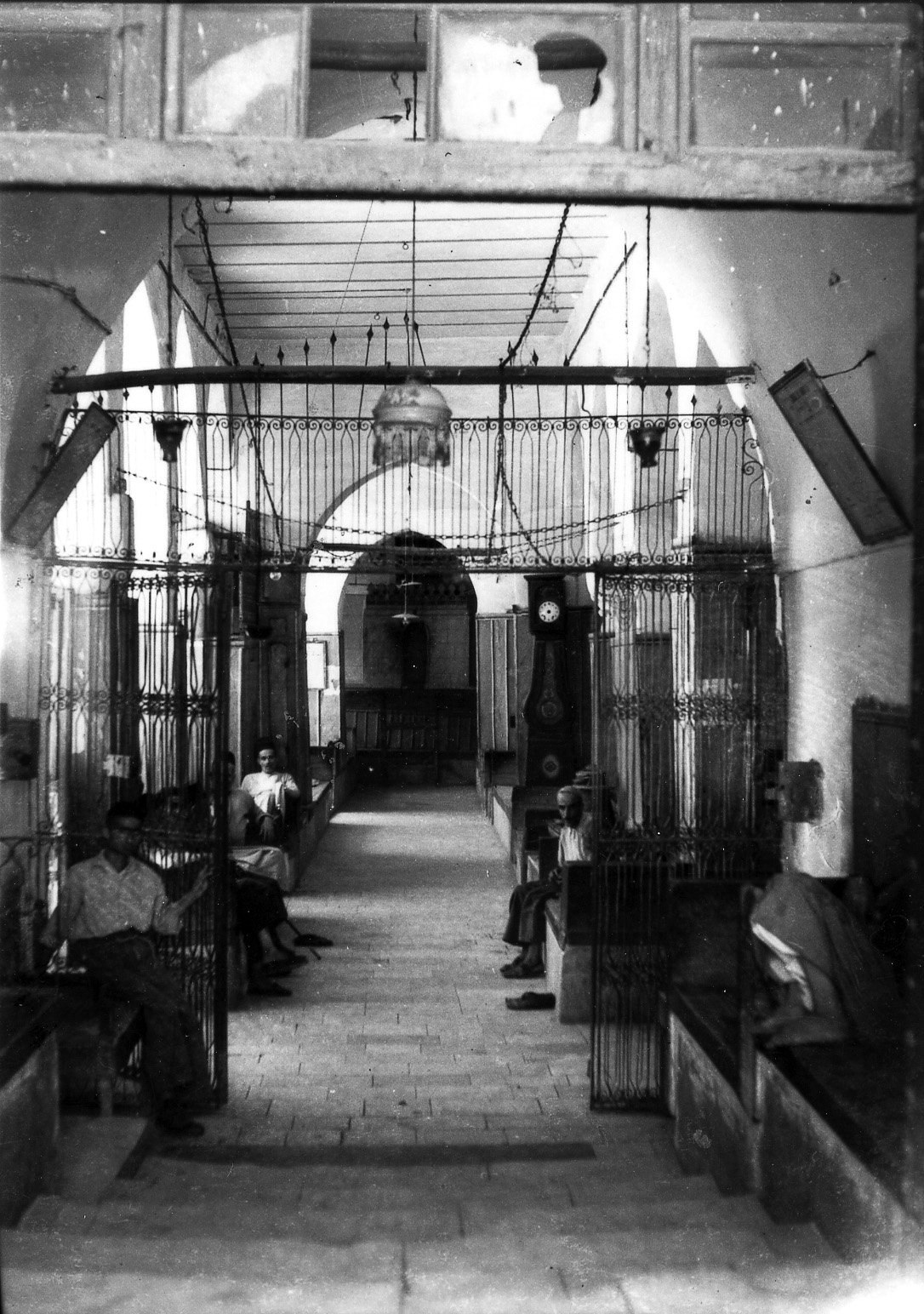Emotional: Thanks to One Woman's Initiative, the Ancient Synagogue is Restored
Sarah Shama traveled to Syria to document the ancient synagogue in Aleppo, unaware it would be the last time it stood in its original form. Now, due to the exclusive photos she brought to Israel, the synagogue is restored for future generations.
 In the circle: Sarah Shama (Photo: Courtesy of Ora and Avraham Haber, Jerusalem)
In the circle: Sarah Shama (Photo: Courtesy of Ora and Avraham Haber, Jerusalem)"I do not know what extraordinary intuition drove me to travel to Aleppo to photograph the synagogue just days before Muslims set it ablaze..." Sarah Shama opened her notes with these words in a notebook where she documented her bold and unusual story, when she aimed to photograph the central synagogue in Aleppo, her hometown. At that time, she did not realize her photographs would become a historic asset, as they were the last documentation of the synagogue before it was set on fire a day after the photo was taken.
Today, when the ancient synagogue has been restored through VR (Virtual Reality) technology at the Israel Museum, one can understand the immense value of these rare pictures. "The reconstruction we carried out is based on Sarah Shama's photographs, a very special and brave woman who documented the synagogue right at the last moment," explains Revital Chovav, the museum's curator.
So what was truly Sarah Shama's role in documenting the synagogue, and why did the operation of bringing the photos become so daring and dangerous? Revital elaborates on this remarkable story.
 (Photo: Courtesy of Ora and Avraham Haber, Jerusalem)
(Photo: Courtesy of Ora and Avraham Haber, Jerusalem)A Daring Documentation
"Sarah Shama was born in Aleppo," begins Revital, "she lived in Aleppo from 1908 until she came to Israel in 1932. She was a community member and felt a very strong connection to the place. After she had already settled in Israel, Sarah decided to commemorate her father's memory, as he lived all his life in Aleppo and also passed away there. She concluded that the best way to honor him would be to create a photo album of the synagogue he loved so much. He was a prominent congregant and contributed money to poor families and encouraged the study of the Torah by children.
"In 1947, Sarah decided to hire an Armenian photographer and together they went to the synagogue to document every part of the building. The result was stunning – a series of 50 pictures documenting the entrance, the halls, the platforms, the benches – every detail, indeed. The synagogue was at its peak glory at that time, and the documentation work was exceptional. In fact, Sarah's photos were what helped us when we sought to recreate the synagogue using virtual reality technology. We relied primarily on them."
But Sarah's initiative did not end there, as it turns out she also collected information from the worshippers, interviewed them, and asked questions. She wrote down all their answers in a notebook, which is also displayed in the museum as part of the exhibition. "Sarah's original plan was to eventually produce a photographic album with written materials that she could hand over to anyone wishing to commemorate the synagogue's memory," explains Revital.
At that time, however, Sarah could not foresee the album's great value. It turns out her visit to Aleppo took place just before the declaration of the state on November 29, known as the UN Partition Plan for Palestine, a day after her visit, the establishment of the State of Israel was announced, and immediately following that, emotions ran high in Syria, and residents looted and burned some of the synagogues in the city, turning others into mosques. Even the synagogue Sarah documented, regarded as the oldest in Aleppo, was looted and burned, including many Torah scrolls it housed, among them the famous Aleppo Codex.
 (Photo: Courtesy of Ora and Avraham Haber, Jerusalem)
(Photo: Courtesy of Ora and Avraham Haber, Jerusalem)"At this point," says Revital, "begins the real adventure for Sarah, as the Armenian photographer quickly grasped the immense value of the photos he took, and immediately returned to Sarah, demanding she add more money or alternatively – return the photographs to him. He also clarified: 'If you don't do this, I'll make sure you are accused of espionage.' This was no idle threat, as those were times when Sarah, an Israeli citizen living in Jerusalem, was staying in Aleppo; it was clear she was at great risk and could at any moment be handed over to the Syrian authorities. But Sarah was very shrewd; she responded to the photographer that the pictures weren't currently with her and assured him she would give them to him the next morning. Right after, she returned to her hotel room, packed her suitcase, including a small Torah scroll belonging to her family, which she managed to take from the synagogue before it burned down. She traveled to the airport in Beirut amid real life-threatening danger and boarded a direct flight to Israel."
Revital notes that although the story took place the year the state was established, the synagogue photos were only revealed in 1988, when Sarah reached the age of eighty and began to understand that the only way to preserve the photos would be in a museum. That year the Aleppo Codex was first presented at the Israel Museum, and she decided to join her photos to it in a special exhibition established for that purpose.
Three-Dimensional Commemoration
As mentioned, nowadays a new and magnificent initiative is being launched, showcasing a virtual reconstruction of the synagogue. The interesting thing is that the initiator of the reconstruction is none other than Avi Dabbach, the grandson of the ancient synagogue's sexton. "I have a special connection to the synagogue," Dabbach shares excitedly, "My great-grandfather, Ezra Dabbach, was the synagogue sexton for thirty years. His stories about the Aleppo Codex kept in the place led me to create the documentary 'The Lost Crown' that investigated the mystery of the missing pages of the codex. During the film's research, Sarah Shama's treasure of photos was discovered, leading to the creation of 'MaKom' – a virtual reality reconstruction of the Great Synagogue of Aleppo.
"This isn't about documenting the synagogue," he emphasizes, "but about a virtual reconstruction of it – creating a three-dimensional space, in actual size, where you can move around and see all parts of the synagogue – the halls, the platforms, the decorations, and everything else. Of course, this wasn't a simple task. For the project, I was assisted by my partner from Israel – Yehudit Mansen-Ramon, and two international partners – Mike Robbins and Remka Heisen. Together we created the experience based on extensive research and the most advanced new virtual reality technologies. In addition to Sarah's photos, we also relied on various testimonies and maps, but to know exactly what the synagogue looked like, we unequivocally relied on Sarah's photographs. Once we got the photos, we realized they were a real treasure, but the challenge was still ahead because we had to turn about 40 still photos into a complete building we had never been to, and no longer exists. We needed to revive in animation the characters of Sarah and the synagogue members she met, like the sexton's daughter or the community rabbi, and tell their story. Personally, I am very excited that we managed to ultimately create this exhibit and document a completely destroyed synagogue, now commemorated for future generations."

